Top 10 Universities In The WorldIf you want to study at the top university, we have compiled a list of the top 10 universities in the world according to the QS ranking. The QS ranks the universities based on different parameters like subjects, country, continents, etc., by ranking the universities. They help students all over the world to identify and choose the best for themselves. 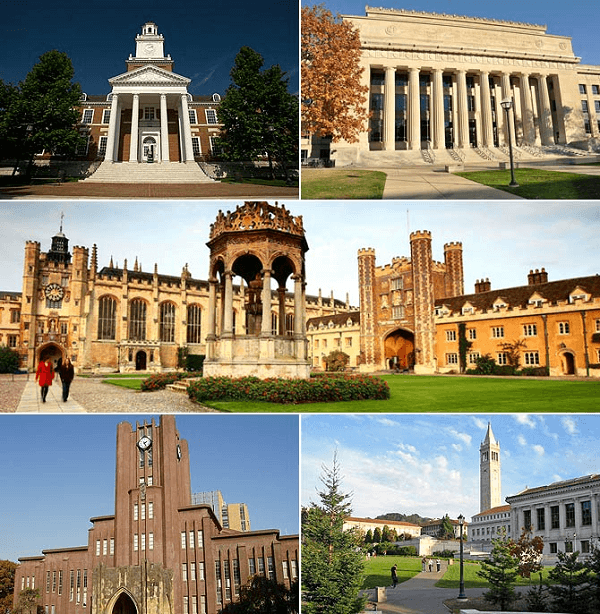
1. Massachusetts Institute of Technology (MIT)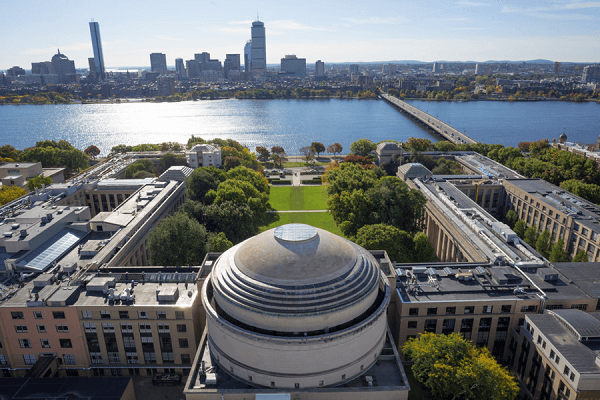
In Cambridge, Massachusetts, there is a private land-grant research institution called the Massachusetts Institute of Technology (MIT). Since its founding in 1861, MIT, one of the top academic institutions in the world, has contributed significantly to the advancement of contemporary science and technology. MIT was established in response to the growing industrialization of the US and followed the model of the polytechnic universities in Europe, emphasizing laboratory training in applied science and engineering. The other two private land-grant institutions in the US are Tuskegee University and Cornell University. MIT is one of them. The 166-acre (67.2-hectare) MIT campus in Cambridge extends almost a mile along the northern bank of the Charles River. The Kendall/MIT MBTA Red Line stop is situated near Kendall Square at the northeastern border of the campus. The areas around MIT in Cambridge include a mix of high-tech firms using contemporary office spaces, renovated industrial structures, and various residential communities. At the beginning of 2016, MIT updated its Kendall Square Initiative and presented it to the City of Cambridge. This plan included ideas for a dense, high-rise, transit-oriented development that would include office space, retail space, residential space, a startup incubator, and educational facilities. The List Visual Arts Center and the MIT Museum will eventually be located on the eastern end of campus, next to a Kendall Square subway entrance. One of MIT's 11 student residence halls is reserved for undergraduates for a minimum of four years. On-campus residents can access faculty housemasters, live-in graduate student tutors, and resident advisers for guidance and assistance. Only undergraduate students enrolled for at least four years in one of MIT's 11 residential halls can do so. On-campus residents can access resident counselors, live-in graduate student tutors, and faculty housemasters for guidance and assistance. "The division of MIT's campuses into East and West Campuses is one of its distinguishing features. East Campus is widely renowned for its strong counterculture." Also, MIT offers 2 apartment buildings for married student families and five dorms for single graduate students. Numerous suitable students from the graduate and undergraduate programs at MIT take classes together often. Five topic libraries make up the MIT library system: Rotch (Music), Hayden (Humanities and Science), Dewey (Economics), and Barker (Engineering) (Arts and Architecture). Various specialist libraries and archives are also available. Over 2.9 million printed volumes, 2.4 million microforms, 49,000 print or electronic journal subscriptions, and 670 reference databases are all included in the libraries. In the last ten years, libraries have increasingly emphasized digital resources over print ones. The Lewis Music Library, which focuses on electronic music and music from the 20th and 21st centuries, the List Visual Arts Center's changing exhibitions of contemporary art, and the Compton Gallery's interdisciplinary shows are notable collections. For all new construction and renovation projects, MIT allows a portion of the budget to commission and support its sizable collection of outdoor sculptures and public art. The university has historically pioneered collaborations between academia, industry and government for research and teaching. The first venture capital company in the United States was established in 1946 by President Compton, Merrill Griswold, chairman of the Massachusetts Investor Trust, and Georges Doriot of Harvard Business School. Compton founded the MIT Industrial Liaison Program in 1948. The first formal architecture program in the United States was established at MIT, and the school has a track record of commissioning forward-thinking structures. It is currently known as the School of Architecture and Planning. The first structures built on the Cambridge site were finished in 1916 and are frequently referred to as the "Maclaurin buildings" after the Institute president who oversaw their construction, Richard Maclaurin. These enormous structures, designed by William Welles Bosworth, were the first non-industrial buildings in the US to be constructed of reinforced concrete, with much fewer university facilities. The City Beautiful Movement of the early 1900s impacted Bosworth's design, including the Barker Engineering Library's Great Dome, which has a Pantheon-like shape. Graduation ceremonies are held annually in Killian Court, visible from the Great Dome. There is a police department at MIT. The suspects, Dzhokhar and Tamerlan Tsarnaev, shot and killed MIT Police patrol officer Sean Collier three days after the Boston Marathon bombing in April 2013, igniting a bloody manhunt that forced the closure of the campus and most of the Boston metropolitan region for the day. A week later, thousands of police officers from Canada and New England attended Collier's memorial service, organized by the MIT community and attended by more than 10,000 individuals. The "Brass Rat" is a huge, hefty class ring worn by many upperclassmen and graduates. The ring's official name, first used in 1929, is the "Standard Technology Ring." MIT has 1,069 academic members as of 2021. Faculty members give lectures, counsel graduate and undergraduate students, serve on academic committees, and carry out original research. Seventeen MIT-affiliated academics and staff personnel received Nobel Prizes between 1964 and 2009. (thirteen of them in the latter 25 years). 37 MIT faculty members have received Nobel Prizes as of October 2020, the majority in the fields of physics or economics. 2. University of Cambridge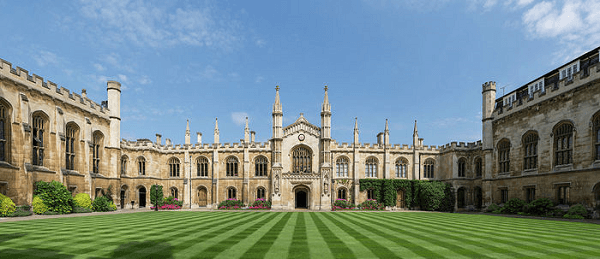
The University of Cambridge is a collegiate public research school that welcomes more than 18,000 students worldwide. It is situated in the heart of the historic city of Cambridge, 50 miles north of London. The university comprises multiple listed structures and is separated into 31 independent colleges, many of which are located along the renowned river Cam. Instead of applying to the university as a whole, students apply to specific colleges. You can reside on campus and frequently get instruction there through college supervision, which is small-group teaching sessions. The Institution of Cambridge was established in 1209, making it the second-oldest university in the English-speaking world and the fourth-oldest university in the whole globe. Twenty percent of the residents of Cambridge are students, and most of the older institutions are located close to the town's Core. King's College Chapel, the James Stirling-designed history faculty building, and the Cripps Building at St. John's College are just a few prominent structures that give Cambridge its distinct personality. The city of Cambridge is well known for being a lively destination for students to study. More than 100 libraries at the institution, totaling more than 15 million books, are located there. Cambridge is the wealthiest university in Europe and among the world's wealthiest in terms of endowment size and consolidated material assets. [i]The central university, excluding colleges, earned £2.192 billion in revenue in the 2019 fiscal year, of which £592.4 million came from research grants and contracts. The central university and colleges had a combined endowment of more than £7.1 billion and total consolidated net assets of more than £12.5 billion, discounting immaterial historical assets. Their publications are read by more than eight million students worldwide annually and about fifty million students, teachers, and researchers each month. No college at the University of Cambridge is as ancient as the institution itself; the colleges were initially an accidental aspect of the university. Scholarly grants were awarded to the colleges. Hostels, which were institutions without endowments, existed as well. Over the years, the colleges eventually absorbed them, but they left certain remnants behind, such as the street name Garret Hostel Lane. The institution immediately made a name for itself as a leader in the field of mathematical research. The institution created a Tripos test in mathematics. Students who completed mathematics were given first-class honors. The highest student in the Tripos exam group is the Senior Wrangler, considered "the greatest intellectual achievement conceivable in Britain." As a collegiate university, Cambridge comprises separate, self-governing colleges, each of which has its assets and sources of income. Academics and students from various subjects are typically brought together at colleges. Academics from various colleges are represented within each faculty, school, or department at the university. The university's general board oversees the faculty's duties, which include ensuring that lectures are delivered, planning seminars, conducting research, and creating lesson plans. They form the University of Cambridge and the central government led by the Vice-Chancellor. On each of these levels, the university (the Cambridge University Library), the faculties (including faculty libraries like the Squire Law Library), and the individual colleges maintain multidisciplinary libraries typically intended for the undergraduate students of their respective colleges. The colleges were separately created as parts of the university and are autonomous organizations with their endowments and real estate. A college is the home of all students and the majority of academics. The importance of colleges may be seen in the housing, welfare, social activities, and undergraduate instruction they offer. The university, which organizes lectures and confers degrees, owns all the faculties, departments, research institutes, and laboratories. 18.8% of candidates were accepted to the University of Cambridge in 2018-2019, indicating that admission is tough. Cambridge added an over-subscription clause to its offers in 2021, allowing the institution to revoke acceptances if an excessive number of applicants achieve its strict entry requirements. In the event of events outside the university's reasonable control, the provision may be applied. The deadline for submitting undergraduate applications, which UCAS handles, is in the middle of October of the year before starting. Before the 1980s, candidates for all disciplines had to pass unique admission exams. Since then, extra exams for select topics, such as the Thinking Skills Assessment and Cambridge Law Test, have taken their place. The university has occasionally thought of reinstituting a test for all subject areas. The University of Cambridge has research departments and teaching faculties in almost every academic field. All university departments carry out research and lectures. Most supervision, student housing, and extracurricular activity financing falls under the purview of the colleges. Regent House, the university's governing body, must vote on each graduation like any other act. A congregation, a formal gathering of the Regent House accomplish this. Normally, all university processes for undergraduate and graduate students and other degrees are concluded during this act. Candidates must ask their Colleges to present their degrees during the commencement ceremony when degrees have been accepted. 3. Stanford University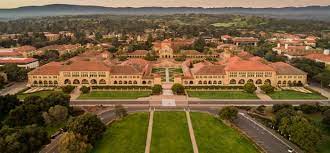
Leland Stanford University, the full name of Stanford Junior University, is a famously private, coeducational university in Stanford, California, in the United States (it is close to Palo Alto). The institution was established in 1885 by railroad tycoon Leland Stanford and his wife Jane (née Lathrop); it was named for their only child, Leland Jr., who died when he was a young boy, and it was inaugurated in 1891. Most of Stanford's original Palo Alto farm is now the university campus. The buildings are made of soft buff sandstone and are long and low with wide colonnades, open arches, and red-tiled roofs. They were created by landscape architect Frederick Law Olmsted and designed by architect Charles Allerton Coolidge. Leland and Jane The major eastern institutions, particularly Cornell University in Ithaca, New York, served as inspiration for Stanford in designing their institution. The Stanfords, especially Jane, wanted their university to stand out from the eastern institutions, which frequently tried to imitate the design of English universities from an architectural standpoint. The foundation grant stipulated that the structures should "look like the ancient adobe houses of the early Spanish days; they will be one-story; they will have deep window seats and open fireplaces, and the roofs will be covered with the classic dark red tiles." This still serves as a reference for campus buildings. Frederick Law Olmsted, a well-known landscape designer who had previously created the Cornell campus, was also employed by the Stanfords to build the Stanford campus. Stanford is a private, nonprofit institution run as a corporate trust and overseen by a board of trustees nominated privately and can have up to 38 members. With a 4% admission rate, Stanford is regarded by US News as the "most selective" university. 89% of undergraduate students were housed on-campus by universities as of 2013. Eighty different types of homes, including dorms, co-ops, row homes, fraternities, and sororities, are home to undergraduates. One hundred eighteen mobile houses were placed at Manzanita Park as "temporary" accommodation from 1969 to 1991. However, as of 2015, the Humanities House, Castano, Kimball, and Lantana dormitories have all been finished. Stanford has a diverse group of religious faculty, staff, and students. By encouraging enlightening conversation, significant ritual, and long friendships among individuals of various religious backgrounds, the Stanford Office for Religious Life works to "guide, foster, and promote spiritual, religious, and ethical life within the Stanford University community." A senior associate dean and an associate dean provide support to the dean who serves as its leader. The Stanford Memorial Church, located in the heart of campus, hosts a Sunday University Public Worship (UPW) service that is typically in the "Protestant Ecumenical Christian" tradition. UPW occasionally hosts interfaith services. At Stanford, pre-professional student organizations with goals ranging from company incubation to paid consultancy are also prevalent. Its objective is to assist the upcoming generation of business owners. StartX is a nonprofit startup accelerator for businesses operated by students and teachers. Students make up the majority of the personnel. An on-campus business group, Stanford Women In Business, supports Stanford women in navigating the traditionally male-dominated field of technology. Under the 2015 Stanford Campus Climate Survey, 4.7% of female undergraduates reported having experienced sexual assault in the university's definition, while 32.9% reported having engaged in sexual misconduct. The poll found that 85% of misbehavior offenders were Stanford students and that 80% of them were guys. According to the survey, alcohol or drugs were frequently used as aids by those who committed sexual misconduct: "According to the survey, nearly three-fourths of the students whose responses were classified as sexual assault stated that the act was carried out by someone or something taking advantage of them while they were intoxicated or high. Nearly 70% of students who disclosed engaging in nonconsensual oral sex or penetration reported having experienced sexual misconduct." 4. University of Oxford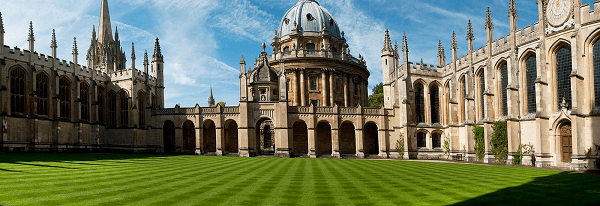
The Institution of Oxford is the oldest university in the English-speaking world. Its founding date is truly a mystery, but it is believed that instruction began there as early as the eleventh century. It is situated in and around Oxford's medieval city center, which the 19th-century poet Matthew Arnold dubbed "the dreaming city of spires," and it has 44 colleges and halls in addition to the biggest library system in the UK. There are 22,000 total students at Oxford, almost half of them are undergraduates, and 40% are from outside the United States. Oxford has the youngest population in the UK because a quarter of its population is students. The University of Oxford does not have a primary campus; its structures and amenities are dispersed around the historic city center. Each of its colleges has a unique personality and traditions that frequently go back centuries. Colleges are autonomous organizations to which applicants typically apply directly. There is a lot to see and do in the vibrant, international city of Oxford. Numerous old and famous structures can be found there, such as the cathedral, the Bodleian Libraries, the Ashmolean Museum, the Sheldonian Theatre, and the colleges themselves. Students can use their free time to study or participate in one of the numerous available extracurricular activities. Oxford has a vibrant musical community with clubs and associations for every musical style, from jazz to classical to folk. With its best rowers competing annually in the renowned boat race on the River Thames with the University of Cambridge, Oxford is likewise well regarded in the world of sports. Drama aficionados are likewise well-served with one of the biggest and most active university drama scenes in the nation. The University of Dublin approved a law in 1875 permitting women to take exams at a level nearly equivalent to that of an undergraduate; for a brief period in the early 1900s, this permitted the "steamboat ladies" to acquire degrees from the University of Dublin ad eundem. T. H. Green, Edward Stuart Talbot, and George Granville Bradley were a few of the association's more notable members. Most of the other members found Talbot's insistence on an exclusively Anglican institution to be unacceptable. After the two factions eventually split, Talbot's party established Lady Margaret Hall in 1878, and T. H. Green established the agnostic Somerville College the following year. In addition to offering gardens and exotic plants, the Parks also have a number of sports grounds that are utilized for both official and informal competitions. Sites of particular importance include the Genetic Garden, an experimental garden meant to clarify and study evolutionary processes. This position includes oversight of university operations as well as handling student complaints and disciplinary actions. The university professors are referred to as Statutory Professors of the University of Oxford together. They have a special impact on how the graduate programs at the university are run. Undergraduate applicants are not allowed to apply to both Oxford and Cambridge in the same year in order to allow for a more individualized evaluation of students who may otherwise apply for both. The only exceptions are individuals who are seeking organ scholarships or a second undergraduate degree. Out of all the Russell Group universities, Oxford has the lowest offer rate. Most candidates select one of the various schools, which collaborate to ensure that the best students, regardless of their college selections, obtain a place at the university. Exam results-both actual and anticipated-as well as recommendations from the school and, in some courses, written entrance tests or candidate-submitted written work-are used to make the shortlist. Although it varies by subject, about 60% of applications are selected for further consideration. Students who named that College may have their applications randomly redistributed to colleges that are under-reserved for that subject if a large number of shortlisted applicants for that subject choose that College. Shortlisted candidates are then invited to interviews by the colleges, where they are hosted for about three days in December and fed. The institution has faced criticism for the proportion of pupils from private schools it admits; for example, Laura Spence's denial from the university in 2000 sparked intense discussion. While around 93% of all UK students and 86% of post-secondary UK students attend state schools, the University of Oxford made 59% of offers to UK students who attended state schools in 2016. However, 64% of applicants from the UK attended public schools, and the university observes that public school students apply disproportionately to subjects that are oversubscribed. The percentage of pupils attending public schools has been rising. The state share of all admitted UK students from 2015 to 2019 was: 55.6%, 58.0%, 58.2%, 60.5%, and 62.3%. 5. Harvard University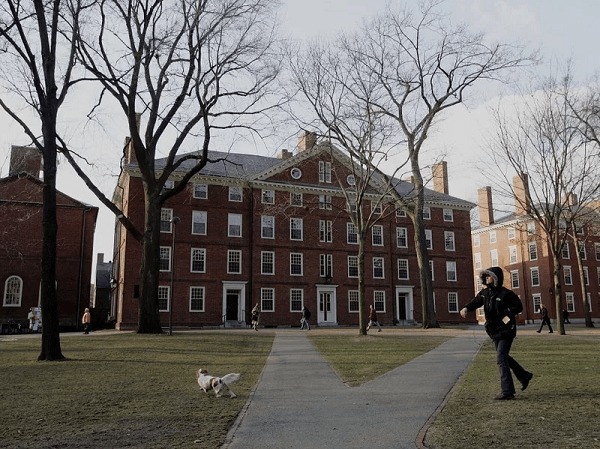
The oldest university in the country, Harvard, was founded in 1636 and is considered a top university not just in the US but also in the rest of the globe due to its stature, reputation, and academic credentials. On its 209-acre campus, which is three miles northwest of Boston in Cambridge, Massachusetts, Harvard is home to 10 degree-granting colleges, the Radcliffe Institute for Advanced Study, two theatres, and five museums. With 18 million volumes, 180,000 serial titles, an estimated 400 million manuscript items, and 10 million photographs, it also has the largest academic library system in the entire world. Harvard was established to educate clergy, as were most American institutions before the Civil War. However, the school's curriculum and student population gradually became secular, and in the 20th century, the admissions process was liberalized to attract a more varied group of students. The university now enrolls 21,000 students, each of whom may be seen rushing by the well-known monument of John Harvard, the institution's first patron, and founder, who stands indifferently in the campus's middle. The bronze statue's shining foot is the result of nearly constant rubbing by visitors and students who think doing so will bring them luck. Only the intellectual elite are eligible for admission to Harvard, and the nominal cost of tuition is considerable. However, because of the university's enormous endowment, extensive financial assistance packages are available, and around 60% of students take advantage of them. As freshmen, students reside in one of the Harvard Yard dorms in a desirable location and dine in the elegant and beautiful Annenberg dining hall. Student life is a rich and fulfilling experience, whether you participate in athletics at Harvard Stadium, support entrepreneurial endeavors at the Harvard Innovation Lab, or write and edit for the Harvard Crimson. Harvard became the most prestigious intellectual and cultural institution among the Boston elite by the 19th century. Following the American Civil War, during the lengthy presidency of Charles William Eliot (1869-1909), the institution established several allied professional schools, transforming it into a cutting-edge research university. In the latter half of the 19th century, a few women were allowed to enroll at Harvard's graduate programs. The medical school initially allowed women to enroll in 1945. Since 1971, Radcliffe women's undergraduate admission, instruction, and housing have been largely under Harvard's control; Radcliffe was formally merged into Harvard in 1999. Harvard is a sizable, largely residential research university that offers 32 professional degrees, 134 graduate degrees, and 50 undergraduate majors. Harvard awarded 1,665 baccalaureate degrees, 1,013 graduate degrees, and 5,695 professional degrees during the 2018-19 academic year. The undergraduate curriculum is four years long and full-time, with a concentration on the liberal arts and sciences. Undergraduates often enroll in four courses every semester in order to graduate in the standard four years. An honors degree in the majority of majors calls for senior thesis work and advanced coursework. The average class size in introductory courses is 12, despite some having large enrollments. The NCAA Division I Ivy League league, is where Harvard College participates. More than any other institution in the nation, the school has 42 intercollegiate sports teams. The oldest continuously held an international amateur tournament in the world pits the united teams of Harvard, Yale, and Oxford against one another every two years. Harvard does not provide athletic scholarships like other Ivy League schools. The school has a red color scheme. The greatest university endowment in the world, estimated to be worth $50.9 billion as of 2022, belongs to Harvard. It had considerable losses during the recession of 2007-2009, which necessitated severe budget cuts, forcing the temporary suspension of the Allston Science Complex's development in particular. Since then, the endowment has grown. The yearly distribution of investment income to finance operations is about $2 billion. The performance of Harvard's endowment determines its ability to support its degree and financial aid programs; a subpar performance in the fiscal year 2016 compelled a 4.4% reduction in the number of graduate students funded by the Faculty of Arts and Sciences. Only 22% of revenue comes from tuition, fees, and student room and board, so endowment income is essential. 6. California Institute of Technology (Caltech)
In Pasadena, California, about 11 miles northeast of downtown Los Angeles, sits the renowned scientific and engineering research and teaching center known as the California Institute of Technology (Caltech). The Jet Propulsion Laboratory (owned by NASA), the Caltech Seismological Laboratory, and the International Observatory Network are just a few of Caltech's top-notch facilities. It is one of a select few technological institutions in the United States that concentrate on teaching technical arts and applied sciences, and because of its intensely tough admissions procedure, only a tiny percentage of the most talented students get admitted. The Einstein Papers Project, a project to preserve, translate, and publish some of Albert Einstein's papers, is now based there. Additionally, it has created an energy innovation hub with the goal of uncovering ground-breaking strategies for producing fuels directly from sunlight. The social scene, clubs, groups, and recreational amenities are abundant on campus. The Caltech Beavers, the College's mascot and representative in 13 intercollegiate sports, take intercollegiate competitions very seriously. A 46-member board of trustees, 46 of whom were privately selected, oversees Caltech as a nonprofit organization. Trustees serve five-year terms and are eligible to retire at age 72. The trustees choose a president to lead the institute as its chief executive officer and manage its operations on the board's behalf. They also choose a provost to lead the institute's academic operations beneath the president, along with ten other vice presidents and other senior positions. The strictest exam scores in the country are required for admission to Caltech. Caltech was listed by CBS News as the third-hardest institution in America to get into for the 2022 school year. The middle 50% of freshmen in the class of 2023 who took the SAT had scores between 740 and 780 for evidence-based reading and writing and 790 and 800 for math, for a total score between 1530 and 1570. 35-36 was the middle 50% range for the ACT Composite score. A typical class has a value of nine academic units, and since there are extensive core curriculum requirements in addition to the degree requirements for individual options, students must take an average of 40.5 academic units per term (more than four classes) in order to complete their studies in four years. The minimal full-time load is 36 units; a high load is 48 units, and registrations exceeding 51 units necessitate an overload petition. Twenty percent or so of students double major. Since the humanities and social sciences majors are meant to be taken concurrently with a scientific degree, this is possible. Although it is not advised, selecting two items from the same category is possible. Caltech encourages undergraduates to be involved in research. Most members of the class of 2010 who participated in the yearly Summer Undergraduate Research Fellowships (SURF) program completed research at least once while they were there, and many maintained their work throughout the academic year. In consultation with their lecturers, students draught and submit SURF proposals for research projects, and around 70% of applicants receive funding. During MIT's Campus Preview Weekend for accepted applicants in 2005, a group of Caltech students conducted a series of practical jokes. Among them is a banner that reads "That Other Institute of Technology," obscuring the term Massachusetts in the "Massachusetts Institute of Technology" inscription on the main building façade. In response, a group of MIT hackers changed the banner's text to say "The Only Institute of Technology." Additionally, Caltech students sent T-shirts to the MIT freshmen class that said "... since not everyone can go to Caltech" and included a picture of a palm tree on the reverse. 7. Imperial College London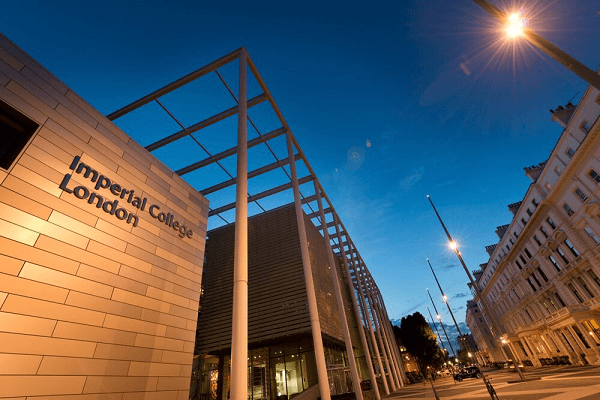
The headquarters of Imperial is located in South Kensington, London, in a district known as "Albertopolis," which was envisioned by Prince Albert and Sir Henry Cole in the 19th century as a place where science and the arts would coexist. Thus, Imperial is surrounded by several internationally renowned cultural institutions, including the Science, Natural History, Victoria and Albert museums, the Royal Colleges of Art and Music, and the Royal Albert Hall, from which all of its graduates also get their degrees. Additionally, there is a lot of green space, including two Royal Parks (Kensington Gardens and Hyde Park) that are only a 10-minute walk from campus. Due to three Tube lines and numerous bus routes serving the area, getting to and from it is also very simple. According to The Guardian, as of 2018, graduates from Imperial earn around a fifth more than those from Oxford and Cambridge in their first year following graduation. According to a 2018 Department for Education assessment, Imperial increased the wages of female graduates by 31.3% above the typical female graduate and the earnings of male graduates by 25.3% above the average male graduate. The Sunday Times Good University Guide identified Imperial's computer science program as having the highest salary in the UK in 2018. In the academic year 2021/22, Imperial had an undergraduate admissions rate of 11.1% and a postgraduate admissions rate of 13.0%. The ratio of applications to admissions for students was 9:1, and for postgraduates, it was 7.7:1. For undergraduate programs, computing, mathematics, and mechanical engineering had the greatest applicant-to-admittance ratios. They were mechanical engineering, computers, and earth science and engineering for graduate school. With 50% of its students from the UK, 16% from the EU, and 34% from countries outside the EU, Imperial is one of the most varied international institutions in the UK. 61% of the students are male, and 39% are female. The fourth highest percentage of undergraduates at traditional British universities who received their education privately at Imperial is 36.5%. According to a 2003 research, a third of female academics "feel that management harassment or discrimination has hampered their careers." Since then, Imperial has received the Athena SWAN Award, which honors workplace policies that boost the careers of women in STEM fields (science, technology, engineering, and math). Concerns were expressed in 2007 over the procedures utilized to terminate employees at the Faculty of Medicine. Stefan Grimm, a member of the Department of Medicine, was discovered dead in 2014 after receiving a termination warning for failing to get enough grant funding. In his final email before his passing, he charged his bosses with pressuring him by expecting him to get grants totaling at least £200,000 per year. With over 140 nations now represented on campus, Imperial is one of the most international colleges in the world, with 59% of its student body in 2019-20 being non-UK nationals. Along with being varied in their nations, experiences, and cultural backgrounds, the College's personnel is also so. 8. University College London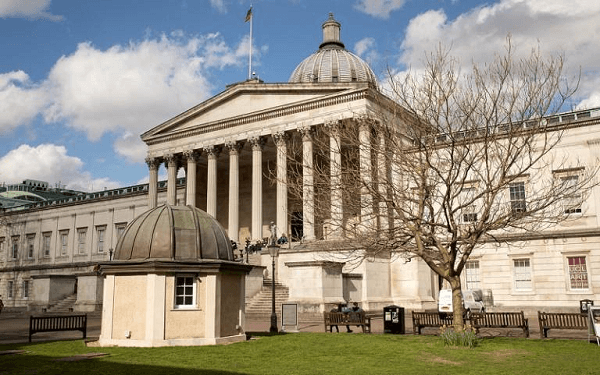
The oldest and largest institution of the University of London is University College London, sometimes referred to as "London's Global University." According to the QS World University Rankings 2023, it is now rated eighth in the world and second in the UK for research power (2021 Research Excellence Framework). Over 40,000 students, 53% of whom are foreign, are presently enrolled at the university founded in 1826. UCL is a part of the elite Russell Group of UK universities and the League of European Research Universities, a group of research universities in Europe that aims to impact European policy and foster the development of best practices through sharing experiences. The academic board and council, both of which were formed by royal charter and have statutorily specified functions, are the two primary entities that make up the UCL governance system. There is also the University Management Committee, which is the executive body in charge of running the university on a daily basis. Twenty people make up the UCL council, including 11 outsiders, seven academic staff members, the provost, three professors, three non-professorial staff members, and two students. The council appoints the chair for a tenure that typically doesn't exceed five years. The chair serves as the official chair of the committees for honorary degrees, fellowships, nominations, and compensation and strategy. Victor Chu, a successful multinational businessman and UCL graduate is the council's current chairman. The provost's senior management team comprises the vice-provosts, the head of finance and business affairs, and the deans of UCL's faculties, who are chosen by the council. According to research by London Economics published in 2022, UCL contributes almost £10 billion yearly to the UK economy. The diffusion of its research and information, worth £4 billion, is the major contributor to this, with the influence of UCL's own investment adding another £3 billion. According to the study, UCL sponsored 234 graduate startups and 83 spinout businesses in 2018-19, which had a combined revenue of £110 million and employed close to 3,000 people. More than 7,000 of the 19,000 jobs supported by UCL's spending were outside of London, according to the report. There are three terms in the UCL academic year. Term One goes from late September to mid-December for most departments, except for the medical school. Term Two runs from mid-January to late March, while Term Three runs from late April to mid-June. Certain departments have reading weeks at the beginning of November and the middle of February. Term 3 is frequently set aside solely for summer assessments. The ExCeL London conference center in East London accommodates the large number of students taking exams. The institution has spent tens of thousands of pounds in previous years to resolve sexual harassment accusations, but in 2018 it stated that it would stop using non-disclosure agreements. The university took the decision when physicist Emma Chapman, who had been abused at the university, successfully sued the organization for sexual harassment through the Ann Olivarius law company. Chapman paid £70,000 to resolve the dispute. The first institution in the Russell Group to outlaw romantic and sexual interactions between academics and their students was UCL in 2020. The average entry tariff for 2019-20 at UCL is 185 UCAS points, which is the fourth highest entry tariff in the nation and roughly equivalent to AAAB at A-level. UCL's offer rate for admission in 2021 was 36.1% for undergraduate admission and 23.5% for postgraduate admission overall, according to a response to a Freedom of Information Act request. In 2017, the university made admission offers to 56.6% of candidates with UK residences, while in 2015, it had the sixth-lowest offer rate in the Russell Group. UCL offers challenging foundation courses lasting a year that prepare students for a range of degree programs at UCL and other prestigious UK institutions. The courses, known as the UCL University Preparatory Certificate, are geared toward international students with strong intellectual aptitude whose home countries' educational systems typically don't provide credentials acceptable for direct entrance. There are two options: the UPCH for the humanities and the UPCSE for science and engineering. After successfully completing this course, students are admitted to Nazarbayev University's undergraduate programs. UCL Press, a university press that UCL entirely owns, was established in 2015. It published monographs, textbooks, and other academic books in a variety of academic fields that are freely downloadable, making it the first fully open-access university press in the UK. It also publishes a number of journals. UCL Press' open access books had been downloaded more than 6.5 million times as of October 2022 in 247 different nations and territories. The UCL Union serves both as a supplier of several services and as the voice of UCL students. It is governed by elected student officers and democratically controlled through general meetings and referendums. Various clubs and organizations, sports facilities, an advising service, and a variety of restaurants, cafés, and stores are just a few of the services that the union sponsors. 9. ETH Zurich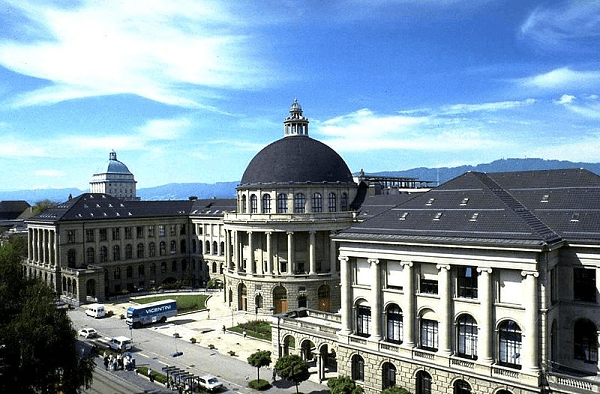
One of the top colleges in the world for science and technology, ETH Zurich is renowned for its innovative research. Since its founding as the Swiss Federal Polytechnic School in 1855, the institution has graduated 21 Nobel laureates, two Fields Medalists, three Pritzker Prize winners, one Turing Award winner, and the famous Albert Einstein. The institution comprises 16 departments that provide academic instruction and carry out scientific research in fields ranging from engineering and architecture to chemistry and physics. Its full name is the Swiss Federal Institute of Technology Zurich in English. The majority of degree programs at ETH Zurich are built on solid mathematical foundations and integrate sound theory with real-world applications. German is the primary language of instruction for undergraduate students, whereas English is the language of choice for master's and doctorate programs. ETH Zurich has two main locations: in the heart of Zurich and on a contemporary campus constructed on a hill outside of the city. Zurich is the largest city in Switzerland. ETH students have a demanding course load, but they may still find time for cultural pursuits, other pastimes, and the numerous regularly scheduled conferences and symposiums where some of the brightest minds in science present their work. With so many sports available on campus, ETH students may exercise their bodies and brains. The SOLA relay race, which covers a total distance of 140 kilometers over 14 parts, is the biggest yearly event. The yearly event has seen participation from as many as 900 teams at once. The University of Zurich is a cantonal institution, but ETH Zurich is a federal institute (i.e., directly managed by the Swiss government). The creation of a new federal university was hotly debated at the time; liberals pushed for one, while conservative forces preferred that all institutions stay under cantonal authority out of concern that the liberals would consolidate their already considerable political influence. Both universities initially shared space at the University of Zurich's buildings. ETH Zurich is consistently ranked first in engineering sciences, computer science, and natural sciences in comparison to German-speaking universities published by CHE and Swiss universities by swiss Ranking. The undergraduate admissions process at ETH Zurich is not selective for Swiss students. After the first year of education, bachelor students are required to pass the Basisprüfung, a block test covering every course they took (basis examination). A student must retake the full Basisprüfung if the weighted average score is insufficient, which often entails retaking the entire first year. Exams in higher academic years have a structure similar to the Basisprüfung but a higher success rate. Gustav Zeuner oversaw the construction of ETH Zurich's main structure from 1858 to 1864, although Gottfried Semper, who was a professor of architecture there at the time and one of the most significant thinkers and theorists of the architecture of the time, served as the building's architect. Semper, the creator, and architect of the Dresden Semperoper, worked in a distinctively Neoclassical style. It stressed strong, distinct massings with fine details that were inspired in part by the works of Andrea Palladio and Donato Bramante, such as the rusticated ground level and enormous order above. There are probably over 100 student organizations at ETH Zurich. The groups frequently put on events of various sizes and levels of popularity. Students from ETH Zurich frequently attend events at the nearby University of Zurich, and vice versa. The VSETH plans more well-known events like the Polyball, the Poly party (which no longer exists), and the Erstsemestrigenfest, the first two of which are held in the ETH Zurich main building. The annual Erstsemestrigenfest occasionally takes place in unusual settings, such as the Zurich Airport. At that event, all freshmen are given preferential treatment. 10. University of Chicago
The Institution of Chicago, a private research university founded in 1856, is located in the heart of Chicago, the third-most populated city in the country. Chicago is one of the best institutions in the country outside of the Ivy League and consistently ranks in the top 10 globally and nationally. Beyond the arts and sciences, Chicago is renowned for its professional schools, such as the Harris School of Public Policy Studies, the Booth School of Business, and the Pritzker School of Medicine. Alumni of the University of Chicago are indebted for the advancement of numerous academic fields, including sociology, economics, law, and literary criticism. The Old University of Chicago campus was destroyed by fire, foreclosure, and destruction in 1890, and the modern University of Chicago gloriously arose in its place. This is symbolized by a phoenix rising from the ashes on the College's crest. The contentious senator Stephen Douglas, a pro-slavery originator of the Kansas-Nebraska legislation, donated property to establish the old institution. A testament to the institution's progressive credentials is the fact that one-fourth of its students are international. Suppose you're interested in media and film. In that case, you're in good hands at the university, which also publishes several newspapers and magazines and is home to the longest-running student film society, Doc Films. Those with interest in theatre can join the renowned Off-Off Campus troupe or gain broadcasting experience at the university-run radio station WHPK. Three University of Chicago students died from shooting incidents in 2021, all of which occurred in Hyde Park close to school. In November 2021, a University graduate was robbed and fatally shot on a sidewalk in a residential neighborhood. Students protested these instances, and more than 300 academic members wrote an open letter to the university administration. Numerous undergraduate and graduate study programs are offered at The Center in Paris, a campus in Paris that is situated on the left bank of the Seine. A board of trustees oversees the operation of the university. The university's 55-member board of trustees, which also includes the president, is responsible for managing fundraising initiatives and supervising the university's long-term growth and strategies. Joseph Neubauer now serves as the board of trustees chairman; David Rubenstein took over as chairman in May 2022. Undergraduate students must complete a variety of courses to fulfill the university's Core Curriculum or general education requirements. There were only 17 Core courses offered at Chicago in 2012-2013, and they were typically taught by a full-time professor (as opposed to teaching assistants. As of the 2013-2014 academic year, the Core requires the completion of 15 courses and proof of fluency in a foreign language. More than 400 clubs and groups run by students are referred to as Recognized Student Organizations at the University of Chicago (RSOs). These consist of clubs and teams from the academic world, religious and cultural organizations, and common interest groups. The University of Chicago College Bowl Team is a notable extracurricular organization; it has won 118 competitions and 15 national championships, topping both categories globally. The university's competitive Model UN team won the North American championship in 2013-14, 2014-15, 2015-16, and once again in 2017-18.
Next TopicTop 10 B.tech Colleges in Hyderabad
|
 For Videos Join Our Youtube Channel: Join Now
For Videos Join Our Youtube Channel: Join Now
Feedback
- Send your Feedback to [email protected]
Help Others, Please Share









